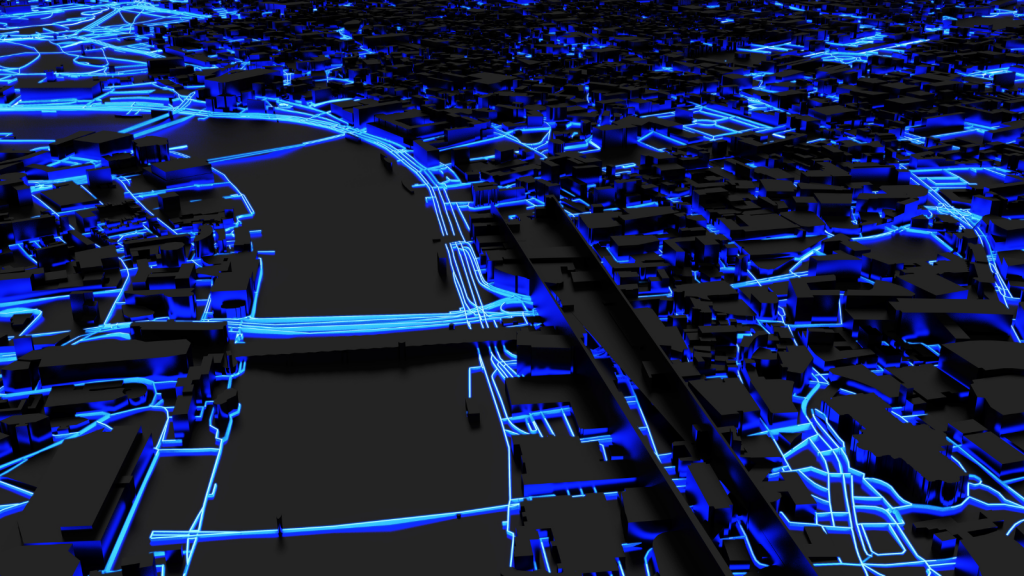In the age of technology and digitalisation, the efficient maintenance of urban infrastructures has become a priority to ensure the safety and comfort of citizens.
In this context, artificial vision has emerged as a powerful tool offering innovative solutions for road maintenance, particularly in terms of street lighting and road signs.
In this article, we will explore how artificial vision can revolutionise the way we approach these important maintenance tasks, and present some of the most important benefits.

Artificial Vision: a vision beyond the visible
Artificial vision is a branch of artificial intelligence that focuses on the interpretation and analysis of images and videos captured by cameras or sensors. Through algorithms and machine learning models, artificial vision is able to extract valuable information from these images to understand the environment around us.
This technology has undergone significant advances in recent years, thanks to the increase in processing power and the development of more sophisticated algorithms.
Applications of Artificial Vision in street lighting
Street lighting plays a crucial role in the safety of our roads and streets.
Using artificial vision, it is possible to intelligently monitor and control the operation of luminaires. Artificial vision systems can detect light failures, such as blown bulbs or defective components, and send alerts to maintenance teams for timely repair or replacement.
In addition, artificial vision enables automatic detection of inadequate or unbalanced lighting levels, helping to optimise energy efficiency and reduce operating costs.

Applications of Artificial Vision in road signs and signals
Road signs are essential to guide drivers and pedestrians safely on roads and city streets.
Using artificial vision, it is possible to detect and analyse road signs in real time, identifying whether they are in good condition, visible and correctly positioned.
In addition, artificial vision can automatically alert to damaged, displaced or obstruction-covered signs, enabling a quick and accurate response by maintenance teams. This ensures that road signs are always in optimal condition, minimising risks and improving traffic flow.
10 benefits of Artificial Vision in road lighting and signage maintenance
The application of artificial vision in street lighting and road marking maintenance offers a wide range of significant advantages. Some of the key benefits of using this technology are listed below:
- Early detection of faults: Artificial vision can quickly and accurately identify faults in street lighting and traffic signals, enabling timely intervention to fix problems before they become safety hazards.
- Optimising energy efficiency: By analysing lighting in real time, artificial vision can detect inadequate lighting levels and help adjust them to maximise energy efficiency, thereby reducing electricity consumption and associated costs.
- Improved road safety: By using artificial vision, it is possible to ensure that road signs are in good condition, visible and correctly positioned. This contributes to safer driving and reduces the risk of accidents on the roads.
- Reduced response times: By automating the detection of faults in street lighting and road signs, machine vision streamlines maintenance processes and enables a faster response to identified problems.

- Efficient planning and management: Thanks to 3D generation and Digital Twin, artificial vision facilitates the detailed planning and management of maintenance tasks, enabling optimisation of resources, minimising traffic disruptions and maximising efficiency in road maintenance.
- Reduced long-term costs: Early detection of faults and timely intervention through artificial vision helps prevent major problems, which in turn reduces the long-term costs associated with more costly and extensive repairs.
- Improved user experience: Maintaining well-maintained street lighting and clear and accurate road markings contributes to a better experience for drivers and pedestrians, improving safety, comfort and confidence in the urban environment.
- Improved inspection accuracy: Artificial vision enables thorough and accurate inspections of street lights and road signs. By using advanced algorithms, it is possible to detect even small imperfections or wear and tear, ensuring more efficient preventive maintenance and increased durability of components.
- Reduction of accidents due to inadequate maintenance: By using artificial vision, the correct installation and maintenance of traffic signs and street lighting can be verified. This helps prevent accidents caused by poorly positioned signs or non-functional lights, ensuring safer driving for all road users.
- Integration with infrastructure management systems: Artificial vision can be integrated with existing infrastructure management systems, such as traffic control systems and lighting management systems. This enables centralised monitoring and more efficient management by facilitating real-time data collection and analysis for informed decision-making.
These are just a few examples of how artificial vision can transform road maintenance, offering significant benefits in terms of efficiency, safety and quality of life in our cities. With its ability to analyse and understand the urban environment, artificial vision is an indispensable tool in the intelligent maintenance of road infrastructures.


